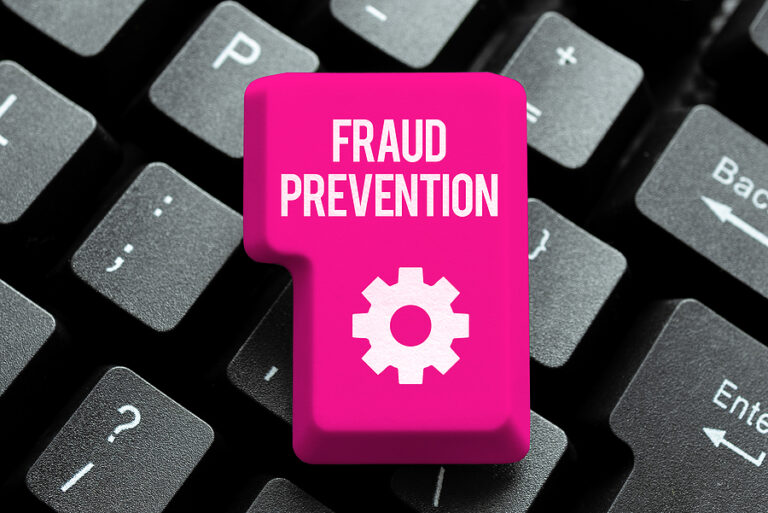The Growing Trend of Family Fraud

Family fraud occurs when a family member steals a family member’s ID, credit/debit card data, or otherwise misuses a family member’s payment credentials to make an unauthorized purchase.
For example, a brother might use his sister’s PayPal account or credit card to purchase something online. There are other types of family fraud, such as pressuring elderly individuals into handing over money or manipulating people when wills are being written and signed. For the sake of this article, we’ll focus on card transactions and the like that could lead to chargebacks.
Family fraud has been around for generations. That said, in an era when smartphones are ubiquitous and can be used to make many purchases, this type of fraud is an increasing concern for not just cardholders, but also merchants and other stakeholders. The growth of online shopping and the proliferation of apps, including pay-to-win games, have fueled family fraud.
Kids and Family Fraud
Children are perhaps the most common culprit, and in many cases, they don’t realize that they’re committing fraud or don’t understand the consequences of what they’re doing. Meanwhile, LendingTree reported in 2024 that 59% of parents actually let their children have access to their cards, up from 52% reported in 2023 (older individuals, often with malicious intent, also commit family fraud.) In 2024, 22% of parents reported that their kids made unauthorized purchases with their cards.
Unfortunately, family fraud can fuel chargebacks, so even if the perp is, in fact, a cute kid making innocent mistakes, the impact on merchants is both real and costly. Should a parent leave his or her phone out and their child purchases something with stored payment credentials, it may ultimately be the merchant who foots the bill, not mom or dad.
The Gray Area of Family Fraud and Chargebacks
Cardholders have a right to file a chargeback, and that typically includes when someone makes an unauthorized purchase. Yet things get rather murky with family for a variety of reasons. Unfortunately for merchants, this can lead to more headaches.
If police arrested members of a criminal gang that stole credit card information and then used it to commit fraud, good chance the perps are getting charged and forced to pay restitution. Most cardholders would likely support such steps, and ultimately, merchants may also receive some restitution.
Yet are parents going to call the police on their young children? Would the police even be able to do anything? This will vary from situation to situation and also from jurisdiction to jurisdiction. In one case in the United Kingdom, a father actually did press charges against his 13-year-old son for racking up $6,000 in charges on Plants vs. Zombies. This amount is exceptionally high, but the average cost of unauthorized use perpetuated by kids is nearly $700.
Even with older children, adult siblings, or other family members, pressing charges is a big step that many would rather avoid. Still, cardholders may try to recover funds through the chargeback process, resulting in merchants getting hit with various penalties. The law here is rather complex, especially when it comes down to what constitutes unauthorized use.
Typically, parents are legally and financially responsible for damage caused by criminal acts by minor children, including property damage/loss and personal injury. With that in mind, an argument could be made that even if the child was not authorized to use a card, and thus committed fraud, the parent is still responsible. Still, credit card companies may approve chargebacks in such cases.
With adult relatives, misuse of a credit card constitutes a criminal act, and thus may be more likely to get approved for a chargeback.
Apple, Google, and Amazon Forced to Refund Parents Millions
In 2014, Apple, Google, and Amazon settled multimillion-dollar lawsuits with the Federal Trade Commission (FTC) following a raft of unauthorized purchases made with parents’ cards. It wasn’t the card networks and chargebacks at the center of the case, but instead the design of the apps and services offered by the companies.
Back then, a passkey wasn’t needed for every purchase, and kids could make multiple purchases after their parents provided a passkey for the first transaction. The FTC has forced companies to add guardrails to reduce the risk of unauthorized purchases, although it remains an issue to this day, and kids still regularly rack up huge charges.
Family Fraud and Intentional, Targeted Crime
Kids and unauthorized purchases are a major source of family fraud but far from the only one. Older and adult children could target their parents, and parents could target their children. Siblings, cousins, and various other family members could be involved. What’s crucial is that a family member uses familial trust and easier access to take advantage of someone else.
With family fraud, the fraudster could steal someone’s credit card out of their wallet or purse on the kitchen table. Or, they might gain access to an electronic device, such as a computer or smartphone, and then use saved payment information to conduct unauthorized transactions. Manipulating members of the family, including the elderly, is another common method.
Elderly family members are especially vulnerable. The AARP reports that the elderly lose more than $28 billion each year to fraud, with more than 70% lost to people who know the seniors in question. The FBI, meanwhile, notes that crime targeting the elderly is on the rise, increasing 84% in 2022 from 2021. Not all of these cases will result in chargebacks. However, they are a serious risk.
One of the major challenges with family fraud is that it may go unnoticed for a long time. This means the amounts stolen can reach lofty heights, thus increasing risks for cardholders, banks, merchants, and card networks.
With family fraud, the families themselves may be hesitant to press charges or pursue civil suits against family members. An “easy” out, in some cases, may be to file a chargeback. The defrauded family member may even try to cover up the fraudulent activities of the family fraudster to protect them from legal ramifications. If their chargeback is approved, that means the merchant will have to pick up the tab.
How to Reduce the Risks of Family Fraud
Merchants can take a variety of steps to reduce the risks associated with family fraud. We’ll take a look at some of the most effective methods for reducing such fraud below. However, if you should have any specific questions or concerns, feel free to reach out to us. We’ve helped countless businesses mitigate and fight family fraud and other criminal activities.
Set Up Two-Factor Authentication
Two-Factor Authentication (2FA) requires users to use at least two forms of verification to log in. For example, besides providing a password, someone trying to log into a website may also have to provide a code sent to their email or smartphone. If a child or other relative knows a family member’s password but nothing else, they may not be able to log in.
Unfortunately, since family members may be able to access the victim’s email, smartphone, and other devices, there’s a high risk that they’ll be able to get around 2FA. Still, this method can reduce some forms of family fraud, and because it adds a bit of extra complexity, it could be particularly effective at preventing small children from making innocent but costly unauthorized purchases.
Send Verification E-mails, Notices, and Receipts After Purchases
If you notice a suspicious transaction, it’s wise to contact the customer to confirm. Let’s say you run an online clothing retail store, and one account regularly buys women’s clothing. Then suddenly, the account is ordering a lot of men’s clothing. The order could be legitimate, but it’s a good idea to send a follow-up e-mail to confirm with the customer.
Simply sending receipts or other notifications to a customer may also alert them that someone is making an unauthorized purchase. Once again, however, since family fraudsters may have access to devices and accounts, they may outwit your security measures, perhaps deleting e-mails and confirming authorization requests.
Offer Responsive Customer Service
When a customer notices odd transactions, their first step is often to contact a merchant’s customer service department. If they don’t hear back in a timely manner, however, they may turn to their bank to file chargebacks. Even if they don’t take that extra step, if fraudulent transactions are occurring, a slow reaction time could afford the perpetrator more time to make unauthorized transactions.
Use Chargeback Management Tools
Proactive chargeback management can ward off chargebacks and fraud. Many tools, for example, make it easier to monitor for suspicious transactions, which could tip a merchant off to family fraud, allowing them to contact the customer and address the issue.
Should a family member have committed family fraud, merchants may face a tough choice: offering a refund or other resolution that may involve losing money, or refusing and facing a potential chargeback dispute. When merchants decide to fight chargebacks, and often they should do just that, the right dispute management tools will make it much easier to handle the entire process. This, in turn, can result in more won disputes.
Need help to reduce fraud and chargebacks? Contact our team right away.






